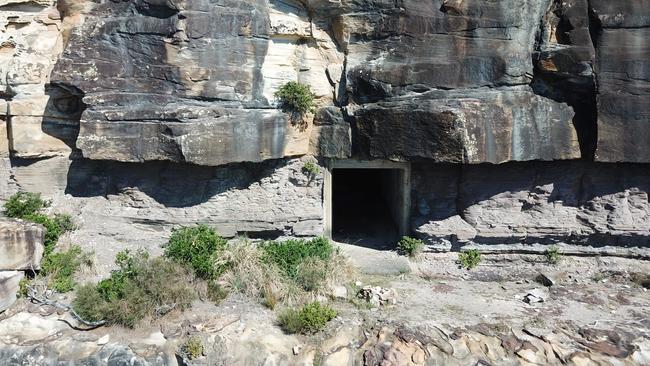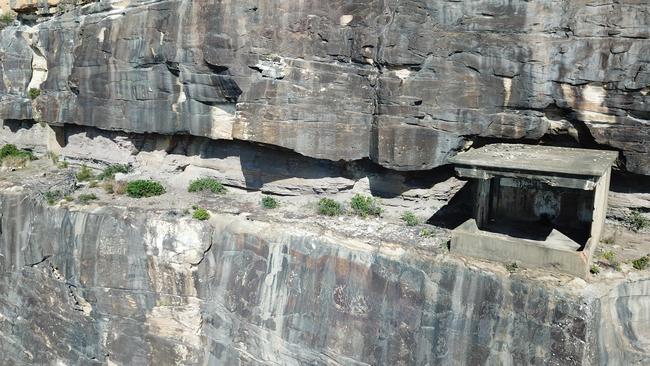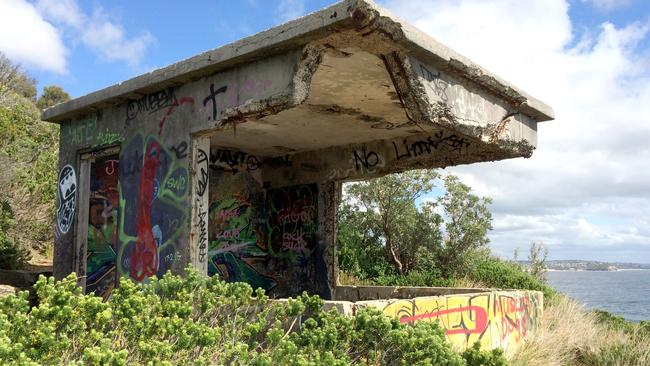Life on the edge for our wartime searchlight lads
“Location, location, location” is the real estate mantra and who can argue with that when the location in question has a panoramic view of the Pacific Ocean.

Manly
Don't miss out on the headlines from Manly. Followed categories will be added to My News.
- A concrete block on North Head is the oldest radar site left
- The navy launch that was wrecked on North Head
- Bilgola Estate surveyor’s body found after going for a swim
“Location, location, location” is the real estate mantra.
And who can argue with that when the location in question has a panoramic view of the Pacific Ocean, can’t be built out, and comes with complete privacy and a rich history of which any Sydneysider would be proud?
There are a few downsides, however, such as the fact the location is a tiny concrete blockhouse halfway down a cliff and your only neighbour had its roof crushed by a falling rock.

Then there’s the problem of access, which used to be via a steel ladder down a vertical shaft but which the army filled in several decades ago to prevent members of the public plummeting to their death.
And obviously it’s “a renovator’s dream”, that slick euphemism for a building that needs either a lot of work or a bulldozer to improve it.

But at least it’s not as bad as it was when it was first built and when the neighbours upstairs occasionally fired their 9.2-inch gun for practice, sending a shudder through the place and causing the chandelier to shake a bit, but they didn’t do it too often and you usually had good warning.

In this case, the small concrete structure was built as a searchlight emplacement close to the south-eastern tip of North Head and was one of two emplacements at either end of a narrow rock shelf.
The cliff-face searchlights were installed before or during World War II and their purpose was to scour the seas off Sydney Heads for enemy ships, while a searchlight on top of North Head scoured the sky for enemy planes.
The army drilled the vertical shaft until it reached a layer of shale, which is softer than the layers of sandstone above it and below it.
Having reached the shale bed, the army then excavated it horizontally until the cliff face was reached.

The concrete-lined mouth of the horizontal shaft is still visible to passing seagulls.
Once the face of the cliff had been reached, the army then cleared the narrow shelf north and south along the face of the cliff and built the searchlight emplacements at each end.
Whether the concrete, steel reinforcing and timber formwork was lowered down the vertical shaft or down the face of the cliff is unknown, as is how the searchlights were manoeuvred into position.
Power for the searchlights was provided by two engine rooms within North Fort.

At some point in the past, a large boulder fell from the cliff face and crushed the roof of the southern searchlight emplacement but the northern one remains unscathed.
It’s believed the northernmost of the two searchlight emplacements was designated No 26 Fighting Light and had a seaward arc of 025-190 degrees, while the southernmost was designated No 25 Fighting Light and a seaward arc of 030-190 degrees.
An identical searchlight emplacement was built at Blue Fish Point, 2km north and far more accessible by land, which also had an engine room to power the light, and which is believed to have been designated No 27 Fighting Light and had a seaward arc of 338-166 degrees.

The searchlight emplacement at Blue Fish Point is now a “canvas” for spray-can artists, whereas the two emplacements halfway down the cliff at the south-eastern tip of North Head have proved too difficult to reach.
Having withstood the elements for more than 70 years, it’s likely the northernmost of the two at the south-eastern tip of North Head will last another 70, as will the one at Blue Fish Point.


